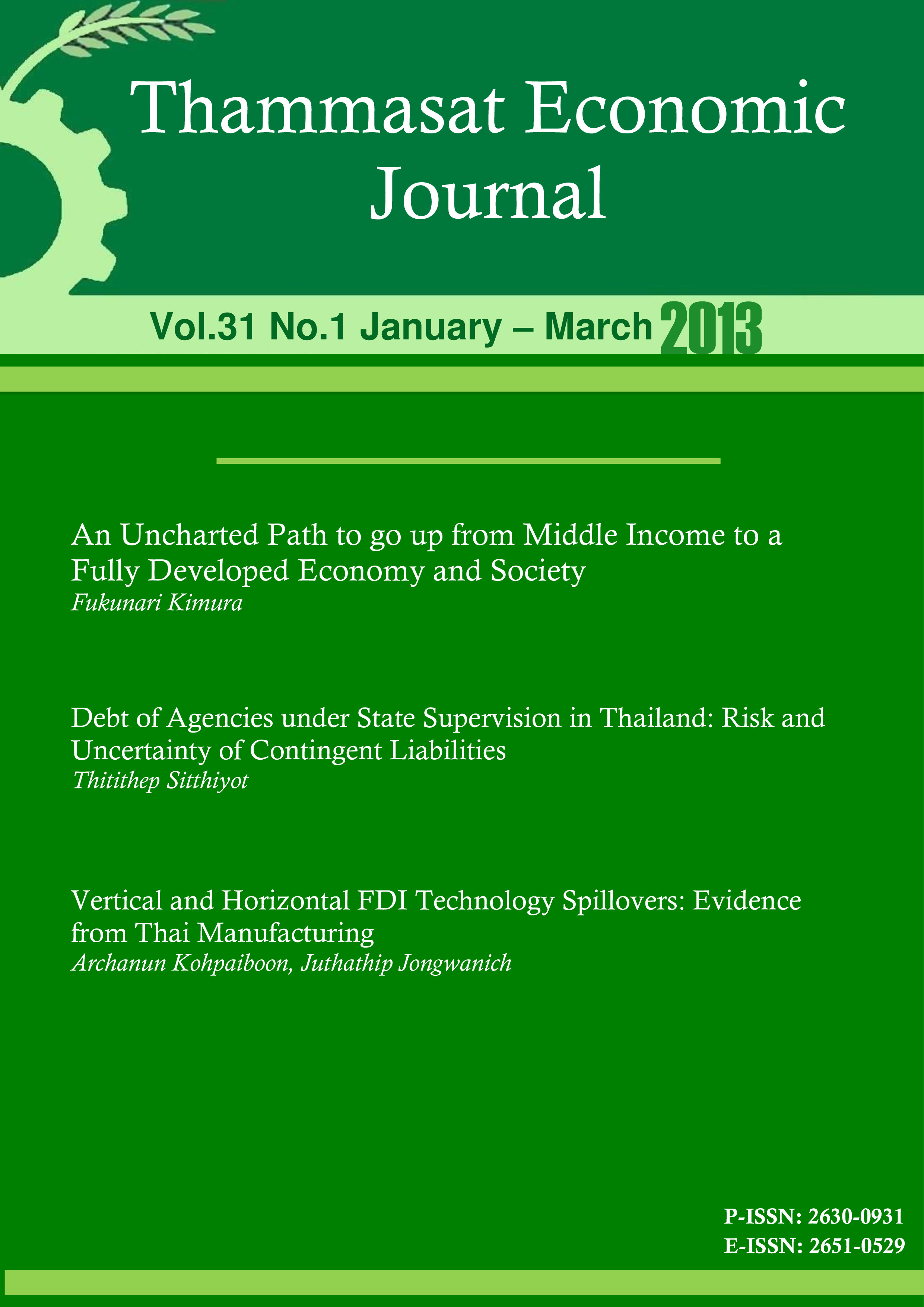An Uncharted Path to Go Up from Middle Income to a Fully Developed Economy and Society
Keywords:
fragmentation, agglomeration, the 2nd unbundling, middle-income trap, technology transferAbstract
ASEAN and East Asia have been successful in applying a new development strategy for taking advantage of the 2nd unbundling for a few decades. Some countries in the region including Thailand have already reached the middle-income level and have started facing the need for transforming their industrial structure with human-capital-intensive and knowledge-based economic activities. This paper claims that the strengths of ASEAN and East Asia should be fully utilized to achieve a new development strategy in order to step up to a fully developed level of development. The key seems to be the effective utilization of positive agglomeration effects, the penetration of local firms and entrepreneurs into production networks, and the betterment of economic environment to secure the supply of human resources and soft infrastructure for human-capital-intensive and knowledge-based industries.
References
2.Ando, Mitsuyo and Kimura, Fukunari. (2013) “Production Linkage of Asia and Europe via Central and Eastern Europe.” Journal of Economic Integration, 28, No. 2: 204-240.
3.Baldwin, Richard. (2011) “21st Century Regionalism: Filling the Gap between 21st Century Trade and 20th Century Trade Rules.” Centre for Economic Policy Research Policy Insight No. 56 (May) (http://www.cepr.org).
4.Economic Research Institute for ASEAN and East Asia (ERIA). (2010) Comprehensive Asia Development Plan. Jakarta: ERIA (http://www.eria.org).
5.Economic Research Institute for ASEAN and East Asia (ERIA). (2012) Phnom Penh Initiatives for Narrowing Development Gaps. Jakarta: ERIA.
6.Fujimoto, Takeshi; Hara, Shoichiro; and Kimura, Fukunari. (2010) “Comprehensive Asia Development Plan and Beyond: Growth Strategies for More Prosperous and Equitable East Asia.” ERIA Policy Brief, No. 2010-02. (October) (http://www.eria.org).
7.Harvie, C., Oum, S., and Narjoko, D., eds. (2010).“SMEs’ Access to Finance in Selected East Asian Economies,” ERIA Research Project Report 2010-11.
8.Intarakumnerd, P. and Ueki, Y., eds. (2009). “Fostering Production and Science & Technology Linkages to Stimulate Innovation in ASEAN”, ERIA Research Project Report 2009-7-4.
9.Jones, Ronald W. and Kierzkowski, Henryk. (1990) “The Role of Services in Production and International Trade: A Theoretical Framework.” In Ronald W. Jones and Anne O. Krueger, eds., The Political Economy of International Trade: Essays in Honor of Robert E. Baldwin, Oxford: Basil Blackwell: 31-48.
10.Kimura, Fukunari and Ando, Mitsuyo. (2005) “Two-dimensional Fragmentation in East Asia: Conceptual Framework and Empirics.” International Review of Economics and Finance (special issue on “Outsourcing and Fragmentation: Blessing or Threat” edited by Henryk Kierzkowski), 14, Issue 3: 317-348.
11.Thanh, Vo Tri; Narjoko, Dionisius; and Oum, Sothea, eds. (2010) Integrating Small and Medium Enterprises (SMEs) into the more Integrated East Asia. ERIA Research Project Report 2009, No. 11 (http://www.eria.org).










